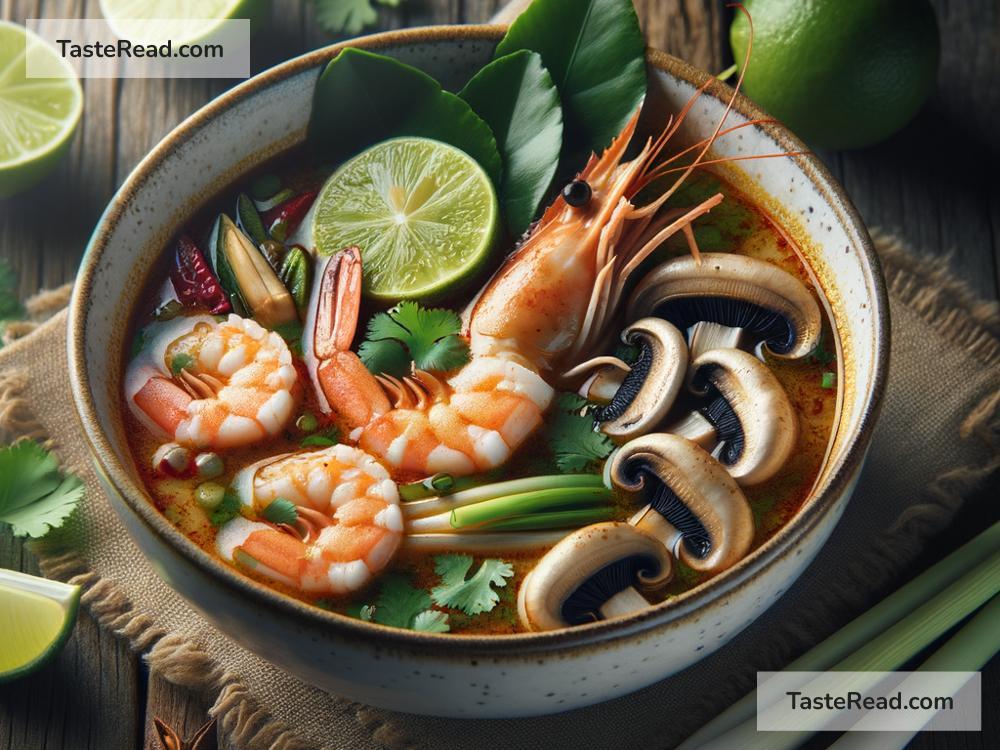How the Thai Tom Yum Soup Became a Comfort Food Classic
When it comes to comfort food from around the globe, the rich, spicy, and sour flavors of Thai Tom Yum Soup stand out. This classic dish, which translates to “boiling and spicy” in Thai, has warmed hearts and homes not just in Thailand but worldwide. In this article, we’ll explore the journey of Tom Yum Soup from a local favorite to a global comfort food classic.
The magic of Tom Yum Soup lies in its simplicity and the depth of its flavors. At its core, the soup consists of a clear broth made with fresh ingredients such as lemongrass, kaffir lime leaves, galangal, lime juice, fish sauce, and chili peppers. It is often garnished with fresh herbs and contains meat like shrimp, chicken, or fish. This perfect blend of sour, spicy, salty, and sometimes sweet flavors satisfies the palate in a way few dishes can.
The origins of Tom Yum Soup are deeply rooted in Thai culture, where it has been a staple dish for centuries. Thai cuisine is known for its emphasis on fresh ingredients and bold flavors, and Tom Yum Soup is a prime example of this culinary philosophy. Its ingredients not only provide the soup with its distinctive taste but also have properties that are beneficial to health, such as improving digestion and boosting the immune system.
The international journey of Tom Yum Soup began as more people around the world became interested in Thai cuisine. Thai restaurants started to pop up in major cities across Europe, North America, and elsewhere, bringing this flavorful soup to a global audience. Its universal appeal lies in its ability to cater to diverse taste preferences. Whether one enjoys meat-based dishes or prefers vegan options, Tom Yum can be easily adapted without losing its essence.
Furthermore, the rise of global travel has played a significant role in popularizing Thai cuisine. Tourists visiting Thailand often return home with fond memories of the country’s culinary delights, with Tom Yum Soup standing out as a memorable favorite. Through word of mouth and the influence of social media, knowledge of this delicious soup has spread far and wide.
In addition to its culinary appeal, what makes Tom Yum Soup a comfort food classic is the warmth and satisfaction it brings to those who enjoy it. The soup’s spicy and sour flavor profile creates a comforting heat that is particularly appreciated during cold weather. It’s not just a dish; it’s an experience that evokes feelings of warmth and comfort, much like a hug in a bowl. This emotional connection is what transforms a simple bowl of soup into a comfort food classic.
The global popularity of Tom Yum Soup has also led to its incorporation into other dishes and cuisines, showcasing its versatility. From Tom Yum-flavored noodles and pizzas to innovative fusion dishes, it’s evident that the love for this Thai soup knows no bounds. These creative culinary experiments have only added to the soup’s appeal, introducing it to even more people around the world.
Moreover, the easy availability of Tom Yum Soup ingredients in international markets has contributed to its popularity. Home cooks and professional chefs alike can now recreate this Thai classic in their kitchens, further solidifying its status as a comfort food favorite. The internet has also played a crucial role, with countless recipes and cooking videos available that demystify the process of making authentic Tom Yum Soup.
In conclusion, the rise of Thai Tom Yum Soup to become a comfort food classic is a testament to its irresistible flavors, health benefits, and the warmth it brings to those who savor it. From its origins in Thailand to its place in the hearts of food enthusiasts worldwide, Tom Yum Soup transcends cultural boundaries, bringing people together in their shared love for this delightful dish. Its journey from a local favorite to a global comfort food classic is a celebration of Thai cuisine’s power to captivate and comfort, one bowl at a time.


